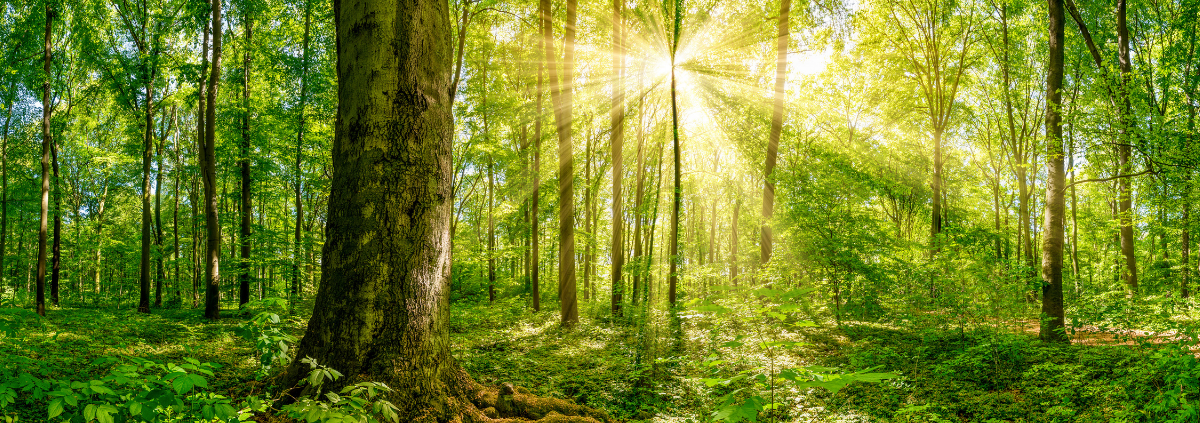Today I Learned: Healthy Sustainable Forestry-Part 1
Today, being sustainable and eco-friendly is something that consumers are starting to demand of the business they support, and more and more companies are catching on to this need. It’s common these days to see companies promote their sustainability campaigns and boast about them in their marketing material.
But with so much noise around sustainability, it’s getting harder for people to know whether a business is truly committed to green, eco-friendly practices and taking real action or if they’re merely greenwashing.
That is why businesses that are genuinely working to be sustainable are turning to independent third-party certifications to prove to the consumer that their practices are sound from an environmental perspective.
Having certified corporate sustainability practices can also attract potential investors and put companies ahead of their competitors. They are stating their values aloud and showing stakeholders that they’re willing to invest in them.
What is the Forest Stewardship Council (FSC)?
The Forest Stewardship Council (FSC) is a non-profit international organization founded in 1993 by the environmental community. It was conceived after the United Nations Conference on Environment and Development (UNCED), also known as the “Earth Summit” held in Rio de Janeiro the previous year.
Their mission statement is to “promote environmentally appropriate, socially beneficial, and economically viable management of the world’s forests.”
The FSC has developed several tools to support in achieving its mission.
- They’ve established a clear set of agreed principles that reflect sustainable forest management practices.
- They developed a certification system that confirms when a forest complies with the FSC standards.
- The FSC logo has enabled a product labeling system that verifies that the wood comes from a responsibly managed source, giving consumers confidence.
These tools empower consumers to make better informed, more sustainable choices, and they help businesses meet the UN Sustainable Development Goals and achieve recognition for their environmental initiatives.
Through their actions, FSC works towards fighting climate change. Their work both promotes sustainable forest management practices and the use of recycled wood materials. This way, they want to ensure that the role of forests as natural net removers of CO2 from the atmosphere is protected to make progress towards net-zero emissions.
What are the benefits of working with the FSC?
The FSC doesn’t sell or distribute products itself, but it does certify companies to independent standards for responsible forestry.
The environmental benefits of buying FSC-certified wood are clear. Less destruction of forests and wildlife habitats; more sustainable use of natural resources; strong protection for workers, local communities, and indigenous rights.
Forests are home to many animals that help create a balanced ecosystem. The FSC helps protect biodiversity through its conservation policies which ensure that forest management can preserve critical habitats while still meeting economic needs.
And they are also known for being strong on sustainable social policies, including democratic decision-making with the people most affected by the land, fair wages and safe working conditions, and respect for human rights.
What is the FSC logo?
To bring awareness to sustainable forestry management practices, the council developed an easily recognizable standard that consumers would be able to look for and use when deciding which wood products are both environmentally friendly and responsibly sourced.
Their logo has become recognized worldwide as a symbol of responsible forestry practices, good corporate citizenship, and environmental stewardship. It certifies that the product comes from an FSC-certified forest. This means that the forest is responsibly managed, it’s being restored, and the environment is being preserved or enhanced for the local communities.
It’s hard to find a more widely recognized symbol in the world of eco-friendly initiatives than that of the FSC logo.
The strength of this symbol lies in the fact that thanks to its long history and solid reputation, it provides both businesses and consumers alike with confidence that products with the logo are made responsibly without compromising on quality or social responsibility.
This way, consumers can really choose to spend their money on companies that create products through sound business practices, thus creating a sustainable future.
And for retailers and manufacturers, using the FSC logo on their products gives them credibility as an environmentally responsible company. This can provide them with an advantage over their competition, especially as consumers now demand that companies take full responsibility for their supply chain sourcing and communicate it transparently.
The FSC recognition is not limited to products sold to end consumers. Businesses also can collaborate with the FSC and have their forests or projects certified to use the FSC trademarks to promote them.



